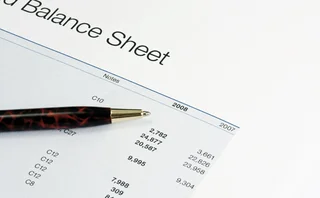
An unusual existence
Although still very much a niche market, trading volumes in dividend futures contracts have surged. What has been driving growth in this market? John Ferry reports

Idiosyncrasies abound in South Africa's financial markets, especially when it comes to listed products. Single-stock futures (SSFs), for example - contracts that have yet to truly make their mark on European and US exchanges - are a big hit in South Africa. Of 168 million equity derivatives contracts traded on the Johannesburg Stock Exchange (JSE) between January and August of this year, 142 million contracts were SSFs.
And then there is the nascent dividend futures market. South Africa is the only country in the world that lists dividend futures. The contracts were launched in 2002, although they were barely traded for several years. Then, last year, the market sprang into life.
From January to August 2006, around 52,000 dividend futures contracts traded. The 2007 figure for the same months is a little over 4.5 million contracts - a growth rate of almost 9,000%, admittedly from a very small base.
"We had a couple of hundred contracts traded, and then we went up to a couple of hundred thousand traded, but for us the value in these volumes is not huge," admits Allan Thomson, the JSE's director of equity and derivatives trading. "It is generating interest because we are the only ones in the world that have this contract."
So why do dividend futures trade in South Africa and nowhere else? Again, the quirky nature of the South African market drove the development. "Dividends are much more volatile in the South African market than in places like the UK," says Geeneshan Naidoo, a Johannesburg-based derivatives trader with RMB Morgan Stanley, the South African equity securities joint venture set up between Rand Merchant Bank and Morgan Stanley.
And it was the way that dividend volatility fed into the SSFs market that ultimately generated huge demand from traders for the JSE to launch a dividend hedging instrument. The SSFs market launched in 1998 but, in those early days, it only had four contracts listed and negligible trading activity. In 2000, the number of SSFs contracts listed was increased to 40, and still no one traded.
"When we were trying to start the SSF market, there was a lot of uncertainty in the way the exchange and the index providers treated corporate actions. One of the reasons no trading was taking place was because of this massive uncertainty. Market-makers just couldn't make a market with confidence," says Thomson.
Corporate actions such as a special dividend payment, for instance, were a thorn in the side of equity derivatives traders in South Africa. The problem was that there were no standardised rules on how corporate actions should be treated, which meant there was a lot more dividend uncertainty in the South African equity markets than was generally present in other sophisticated markets.
Also, there was the added complication of a secondary tax on companies, which in effect meant taxed dividends. This led companies to avoid the tax by putting together complex structures that let them essentially pay their shareholders a dividend without actually referring to it as such. With dividends hidden behind tax-saving structures, this only added to their opacity.
But a bigger headache, at least for dealers, was that the uncertainty that surrounded dividends meant traders could find their books subjected to swings in mark-to-market value whenever a corporate action took place, especially if the actual dividend ended up differing from the consensus of analysts that was used to help generate a price mark.
"Market-makers in SSFs needed dividend certainty, as they were being arbitraged by traders and stockbrokers who entered and closed trades with different market-makers using different dividends," adds Deon Strydom, an equity derivatives trader at Nedbank Equity Capital Markets in Johannesburg. "Generally, if the announced dividend differs from analyst consensus, then the stockbroker would approach the market-maker to adjust the dividend originally used in the futures fair-value calculation based on analyst consensus."
In South Africa, explains Strydom, the dividend often, but not always, differs from the consensus view. Consequently, adjustments between the market-makers and stockbrokers became incredibly time-consuming, she says, if one bears in mind that there are more than 330 listed SSFs on the market. In addition, any adjustment obviously assumes accurate record-keeping of trades on both sides. "The additional risk to the profit profile from being arbitraged or missing a dividend correction was unattractive from both the stockbroker's as well as the market-maker's perspective," Strydom adds.
The result of all this was that equity derivatives traders lobbied the JSE to come up with a contract that would alleviate the uncertainty surrounding dividends, which ultimately prompted the listing of the world's first, and so far only, dividend futures contract in 2002.
However, shortly after the contracts were launched, the JSE and index company FTSE Group got together and made a concerted effort to standardise the treatment of all corporate actions. They subsequently, in late 2002, put out detailed documentation that went through each corporate action event and set forth how it would affect the associated stock. The JSE's Corporate Action Schedule is now available on its website, while further information regarding the methodology on calculation of dividends is published.
"When we sorted out the treatment of corporate actions and there was certainty as to how these would be treated, essentially the need for dividend futures diminished," recalls Thomson. Consequently, the market remained quiet for several years.
But then SSFs market-makers found themselves facing competition in the form of off-exchange contracts for difference (CFDs). "There is no dividend risk in the CFDs market. Because of the way a CFD works, you don't have to agree or try to forecast the dividend," explains Milton Samios, head of equity derivatives at Investec Capital Markets in Johannesburg.
A CFD can be thought of as a combination of three parts: the agreement to swap profit and loss on a daily basis, the agreement to pay or receive interest on a daily basis and the agreement to swap dividends. The factors that go into pricing SSFs contracts, on the other hand, comprise the cash price of the underlying instrument, an interest factor and a forecasted dividend.
The emergence of a CFDs market, therefore, was a further prompt to the JSE to list dividend futures, which when traded in conjunction and simultaneously with an equivalent SSF contract gives the same exposure as a CFD, but with negligible counterparty risk in comparison with off-exchange trades.
Reduced risk
So, having listed dividend futures to negate corporate action risk as it affected SSFs, only to soon after have that risk much reduced through the establishment of formal corporate action guidelines, the emergence of CFDs now gave the JSE and its market-makers a new reason to promote dividend futures.
Their efforts started to bear fruit. Retail investors who had started to take an interest in CFDs increasingly turned to the exchange. In effect, the JSE offered a competitor product by combining an SSF with a dividend future (an SSF with a zero dividend gives effectively the same exposure as a CFD on the same underlying).
"We had a number of our members who dealt with less sophisticated members of the public in the retail market, asking us why we don't just treat the SSF like a CFD and just swap the dividend," says the JSE's Thomson. "We told them we've got a contract that does that and it's called a dividend future. Then, with a little bit of understanding as to what the dividend future does, it has taken root because it simplifies the pricing of the SSF."
Many of the trades currently taking place are emanating from the retail market, where investors just want a simple exchange-traded version of a CFD-type contract. For this reason the market-makers are combining the two products, the SSF and its equivalent dividend future on the same underlying, on a single screen and trading the two automatically and simultaneously. Indeed, some market-makers, when doing an SSF trade for a counterparty, insist on putting the equivalent dividend future through as well, says Samios.
CFDs do, however, still hold some advantages compared with trading the combination of SSF and dividend future, according to Samios. "The problem is that there are quite high fees on the exchange. The CFD product, from a pricing point of view, is better." The JSE charges a booking fee of 2% of the traded value on a dividend futures deal.
Another negative of the exchange-traded product is that sometimes investors find it difficult to work out how mark-to-market values are established. "With the CFD it is really easy. Interest is calculated every day, just like a bank account, whereas with an SSF it is a three-month future, so you have a fixed interest rate and fixed dividend assumption. Sometimes people don't understand what has happened when the mark-to-market comes out the next day," says Samios.
Surely then, the response from the exchange should be to create a single contract that combines the SSF and dividend future in one transparent and less costly transaction? The answer is yes, according to Thomson. "We are working on that, and we will probably do something at the end of the first quarter of next year. The dividend future is a work in progress."
Only users who have a paid subscription or are part of a corporate subscription are able to print or copy content.
To access these options, along with all other subscription benefits, please contact info@risk.net or view our subscription options here: http://subscriptions.risk.net/subscribe
You are currently unable to print this content. Please contact info@risk.net to find out more.
You are currently unable to copy this content. Please contact info@risk.net to find out more.
Copyright Infopro Digital Limited. All rights reserved.
As outlined in our terms and conditions, https://www.infopro-digital.com/terms-and-conditions/subscriptions/ (point 2.4), printing is limited to a single copy.
If you would like to purchase additional rights please email info@risk.net
Copyright Infopro Digital Limited. All rights reserved.
You may share this content using our article tools. As outlined in our terms and conditions, https://www.infopro-digital.com/terms-and-conditions/subscriptions/ (clause 2.4), an Authorised User may only make one copy of the materials for their own personal use. You must also comply with the restrictions in clause 2.5.
If you would like to purchase additional rights please email info@risk.net
More on Exchanges
Asia’s ETF assets on the rise – HKEX presents the results of Asia ETF survey 2019
Asia’s total ETF assets surged by 23.9% in the first half of 2019 thanks to an increasing adoption of ETFs into investment portfolios. According to a survey conducted by Hong Kong Exchanges and Clearing (HKEX), asset expansion in Asia’s ETF market is set…
NYSE Offers Exchange-Calculated Bitcoin Index, with More to Come
NYXBT will initially be based off data from Coinbase Exchange.
Deutsche Börse to set up Europe's first multi-asset RMB platform
German exchange group signs joint venture deal with CFFEX and Shanghai Stock Exchange
Exchange Revenue Figures Rise, Fall; Data Revenues Continue Steady Increase
A mostly positive mix of Q1 results also yield big increases in data revenues for some exchanges.
Lift-off for ASX Aussie dollar swap clearing business
Volumes jump following revamp of Sydney bourse's clearing incentive scheme
Exchange Data Revenues Make Positive Start to 2015
Acquisitions made up for some shortfalls in exchange revenues
CME looks to local banks for FX liquidity in emerging markets
Chicago-based exchange targets China, India and LatAm growth







